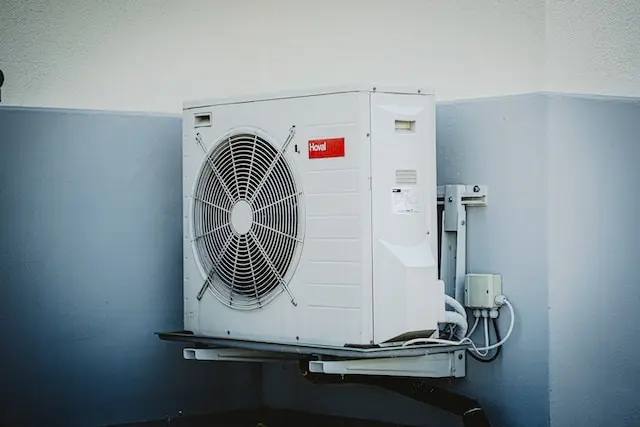If you think that pollution only exists in the outdoors, think again. Indoor pollution can be even worse, considering how much time you spend in enclosed spaces.
The good news is a few preventive measures can help you address the issue of poor indoor air quality and reduce the risk of complications that may arise due to poor air quality in your surroundings.
Table of Contents
Why Is Indoor Air Quality Important
Considering the major shift in work and living dynamics after the pandemic, people generally spent most of their time indoors. The air quality in your surroundings thus has a substantial effect on health and well-being. If you are wondering why indoor air quality is important, here are a few reasons to get you thinking.
Health and Well-Being
According to the NIH, millions of people die every year from illnesses caused by poor air quality. It can lead to multiple respiratory illnesses, headaches, allergies, and asthma complications. It can also impact lung and heart health and cause grave illnesses like cancer.
Increased Medical Costs
Besides the health concerns, illnesses caused by indoor air quality can also translate into hefty medical expenses. Thus good air quality is important for your health and quality of life.
Environmental Pollutants
Whether natural or manmade, the air around us contains pollutants like smoke, chemicals, mold, lead particles, asbestos, etc. It is why it is critical to monitor the air quality, and employ means to improve it so that these pollutants do not impact your well-being.
Six Ways to Improve Indoor Air Quality At Home
Here are six tried and tested methods that can help boost the air quality in your home and lower the risk of health issues caused by environmental pollutants.
Control the Allergens
Your living place is home to a myriad of irritants and allergens that may be causing various issues like sneezing, rashes, itching, watery eyes and nose, and sore throat, among others. The most common allergens include dust, dust mites, mold and mildew, and pet dander.
To keep your allergies at bay, clean the surfaces in your house regularly, including your rugs and carpets, to get rid of dust mites and pet dander. Change your bedding regularly and wash the used bedding in hot water. Also, brush and bathe your pets regularly.
Improve Ventilation
Healthy indoor air is characterized by good air circulation. Open your windows and doors regularly for some time to let the stagnant air out and let fresh outdoor air and sunshine enter.
Change Your Filters
Your AC filters are not the only filters in the house that need cleaning or changing regularly. You must also regularly inspect the other filters in your house, including your vacuum cleaner, dryer, or kitchen vents, and replace them when required.
Get an Air Purifier
Air Purifiers are highly effective in removing most of the pollutants from the surroundings. Air purifiers with a HEPA filter can even remove virus particles from the air. In this regard, Spot Coolers offers the ideal solution for your air quality requirements through its healthy building initiative.
Besides temporary cooling solutions, such as negative HEPA machines and air purifiers help you improve the air quality of your surroundings.
Get Indoor Plants
Various indoor plants are highly effective in removing toxins and releasing clean air for you to breathe. Indoor plants like palm trees, bamboo palm, English ivy, Aloe Vera, and Boston fern are aesthetically pleasing and offer a low-cost solution to improve air quality.
Use Natural Products
You may give little thought to it, but your household cleaners and sprays may contain chlorine or ammonia. The chemicals get absorbed in the upholstery and carpets, which is dangerous for respiratory health and skin.
To keep your house clean and fresh, you can switch to natural cleaning products like lemon juice, baking soda, or vinegar.
How to Monitor Indoor Air Quality
If you are apprehensive about your home’s air quality, you can test it and take the measures mentioned above to improve it. There are two ways to go about it.
Do It Yourself
You will find a variety of air quality test kits that you can use. While some kits are comprehensive, others gauge only a few elements like radon. The price would vary according to the kit you choose.
Hire a Professional
You may also hire a professional to test your home’s air quality. While the cost would be higher, a professional will give you a true assessment of the situation and may also offer services like mold removal if there is any.
Take Preventive Measures to Reduce Pollutants
Prevention is always better than cure, and a few changes can help you greatly improve the air quality in your home. Avoid smoking in your house to prevent the risk of second-hand smoke.
Another concern is VOCs (volatile organic compounds), usually in paints and fabrics. Consider removing your carpets as floors are easier to clean and do not trap pollutants. Also, if you are moving into a new home, get an air purifier to remove the emitted VOCs.
Final Thoughts
Preventive maintenance is a pertinent aspect of keeping the air in your home clean and healthy. Hopefully, this article gives a few ideas on monitoring and improving indoor air quality in your home. It is not only important for the health and well-being of your loved ones, but it is also critical for maintaining a good quality of life.
https://www.petro.com/resource-center/improve-indoor-air-quality
https://www.countryliving.com/uk/homes-interiors/interiors/a30891129/improve-air-quality-in-home/

